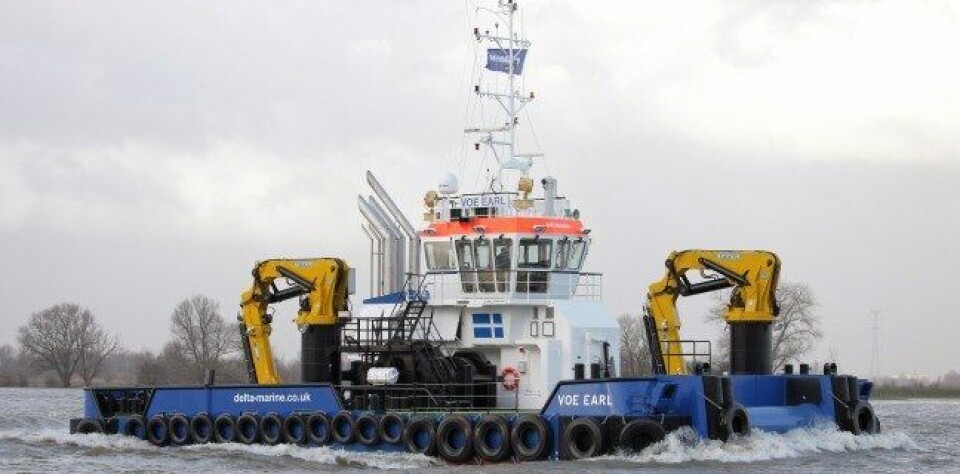
Marine Harvest hires Multicat for de-lousing work
A multi-purpose tug that was used to help salvage the Italian cruise liner Costa Concordia has a new role, as a Thermolicer platform for Marine Harvest Scotland.
The Dutch-built Voe Earl, owned by Shetland's Delta Marine, was being fitted with a Thermolicer supplied by Steinsvik at Bømlo Skipsservice in Norway.

An MH Scotland spokesperson said the Voe Earl would be in operation in Scotland in November, adding: "We will use it across all our farms on the west coast of Scotland, joining our existing fleet of mechanical/non medicinal delousing systems.
"As the business grows over the coming years we will need to buy more mechanical delousing equipment. This is our second Thermolicer. We also have three Hydrolicers in MH Scotland.
"The Thermolicer achieves very high efficacy on every treatment, more than 90 per cent, and is a very gentle treatment method."
According to Delta Marine, the Voe Earl is the world's most powerful Multicat. Dynamic positioning thrusters enable the vessel to hold station within -1 metre accuracy.
The Voe Earl was chartered to help with work on the Costa Concordia in 2012, after a subcontractor on the complex $1.2bn salvage observed the Multicat performing ship to ship transfer works in Great Yarmouth.
Rapid evacuation
Delta's vessel was initially chartered to provide rapid evacuation of plant away from the work site should there be sudden changes of weather as well as general marine assistance, but her adaptability meant she was soon was laying anchors and helping to position cables which would secure Costa Concordia on the sloping ledge where she lay and prevent the wreck from sliding into deeper waters.
On-site logistics proved to be the vessel’s bread and butter but among additional activities were provision of harsh weather ferry services for site personnel, numerous dive support activities, and even a bit of direct salvage work using Voe Earl’s 100t anchor handling winch to help remove Costa Concordia’s 65 tonne rudders whilst manoeuvring beneath the wreck’s overhang, which was denying access to crane barges.
Voe Earl continued working on the Costa Concordia salvage until November 2014, by which time the wreck was parbuckled, prepared for towage and escorted to Genoa by a fleet of workboats which included Voe Earl.
The float off and tow to Genoa was undertaken in July 2014 but Voe Earl remained chartered and on site until November as the post-departure site clean-up and general demobilisation of the world’s largest ever salvage operation continued.





















































